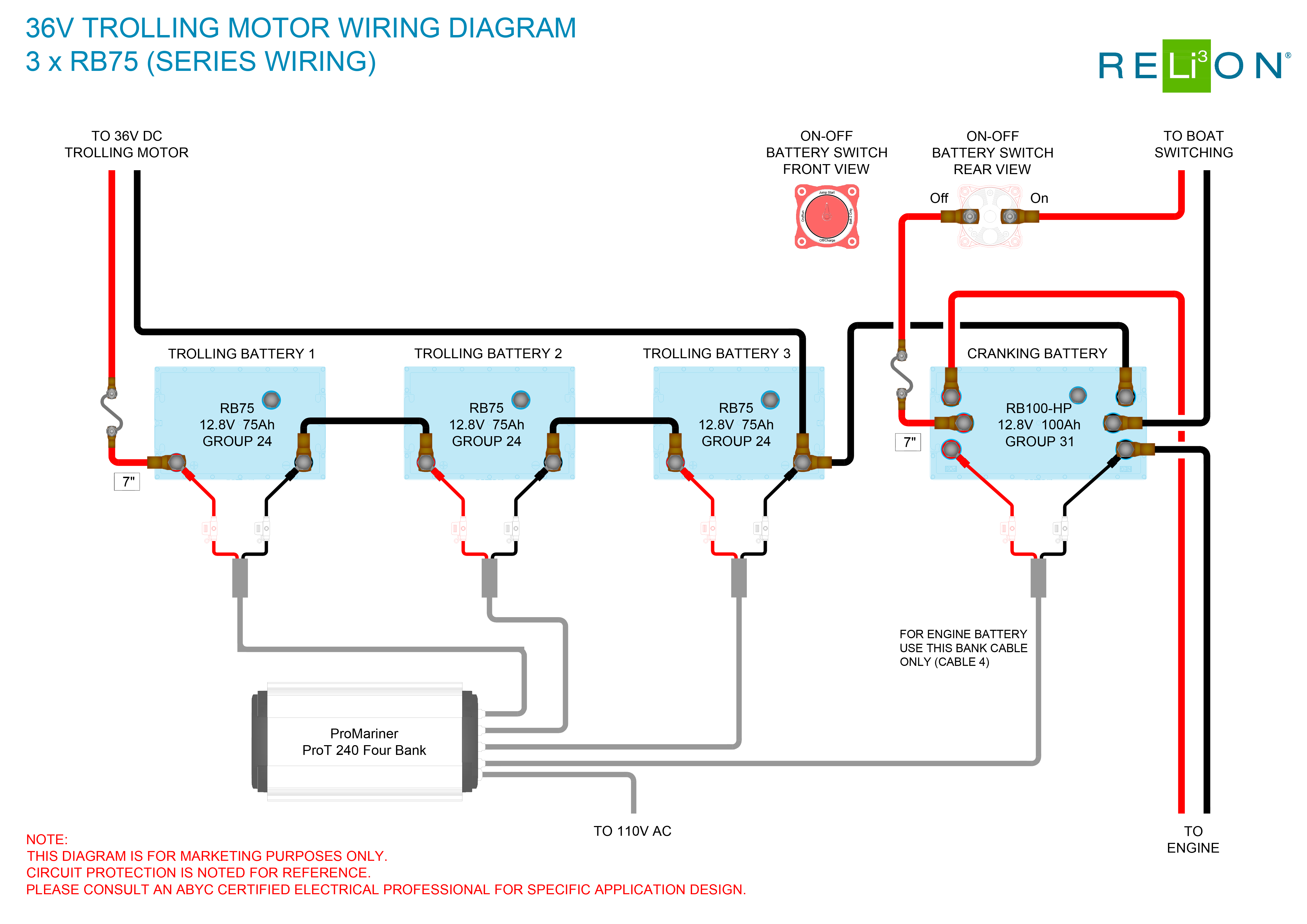Wiring Your Boat Batteries
Below is information on how to install and wire your boat batteries. Included is a list of tools, a visual diagram, as well as information on the 2 different types of wiring connections needed to correctly power your boat motor, trolling motor, and electronic fishing and navigation gadgets.
Tools and Supply List:
To get started with wiring your boat, you will need to keep some basic tools on hand to help you with the process. These tools include:
- Lithium batteries: two batteries to use for the dual battery setup
- Cables: multiple cables to connect batteries and start bank terminals
- Cable cutters: a pair of cutters to adjust the size of the cables being used
- Wrench: an adjustable wrench to secure the connections
- Grease: to use in the protection of electrical components
- Swagging tool: to help adjust tubing fit so that it can secure brazed connections
36V Trolling Motor Series Wiring Diagram:

Do You Need To Wire Your Batteries In Series or Parallel?
In order to fully understand what wiring choice is ideal for you, first you need to decide if you will benefit from a series wiring option or a parallel wiring option. To know which of these is right for you, ask yourself first, what am I using the battery for? The series battery is used for high powered applications such as large boats that have high voltage. Most other situations will call for the parallel wiring option. See below for details.
Series Connection Details
High power applications like on large boats, or in scenarios with large inverters, benefit from a series wiring setup. This wiring option uses anywhere from 2 to 4 batteries, and all of the batteries being used in the series must be similar with regard to age, size, type and manufacturer. When wiring batteries in series, the voltage of the individual batteries are added together, as seen in the examples below.
- 24 Volt: uses two 12-volt deep cycle batteries
- 36 Volt: uses three 12-volt deep cycle batteries
- 48 Volt: uses four 12-volt deep cycle batteries
To wire a group of batteries in series, you connect the negative terminal of one battery to the positive terminal of another battery until all of the batteries are connected. After this, you need to connect a link/cable to the negative terminal of the first battery in your string to your application. Then connect another link/cable to the positive terminal of the last battery in your string to your application. When wiring batteries in series, make sure to always use a charger that matches the battery system voltage. It is also recommended that you charge each battery individually to avoid battery imbalance.
Parallel Connection Details
With parallel wiring, your total battery capacity increases, while the voltage remains the same. This is due to the fact that amperage increases when batteries are wired in parallel, resulting in greater battery longevity. Like the series wiring option, batteries wired in parallel also require that all the batteries in the setup are similar with regard to battery age, size, type and manufacturer.
To wire batteries in parallel, you need to run one wire from the positive terminal of one battery to the positive terminal of another battery. Then, another wire needs to be run from the negative terminal of one battery to the other. Lastly, on one battery, a lead is connected to the positive terminal and another to the negative terminal.
Learn more information on how to wiring information or what batteries are best for your boat